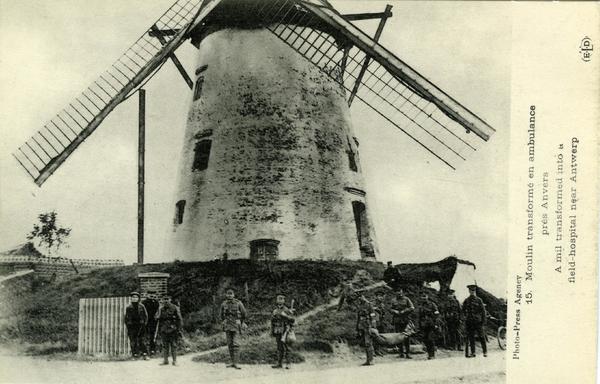By Ron and Mildred Cookson

With Remembrance Sunday next weekend, this week’s newsletter is devoted to the varied roles played by mills during the two World Wars. As field hospitals for wounded soldiers, as look-out posts, as places to relax away from the battlefield and as a means of feeding a nation under siege, we remember their important contribution to the war effort. Many mills were damaged or destroyed during the conflicts; some were even used as target practice. Millers also played an important role; the UK Flour Millers sponsored an ambulance train during the First World War and the Searle Grain Company presented a Spitfire fighter plane to the RAF during the Second. Supplements were added to “National Flour” in 1942 to keep the UK’s population healthy. This article is taken from Mills at War by Ron and Mildred Cookson.
| The First and Second World Wars saw the British Government take control of the milling industry, which fortunately for both sides had already established the National Association of British and Irish Millers. The nature of warfare had changed such that flour mills were no longer just a military asset, but a national one to be directed accordingly. For example the windmill at Sarre was contracted to provide 250 sacks of flour each week to the barracks at Chatham, 40 miles away. In 1922 the mill stopped working by wind, the sweeps were sold to Union Mill Cranbrook and milling continued with a gas engine. | |
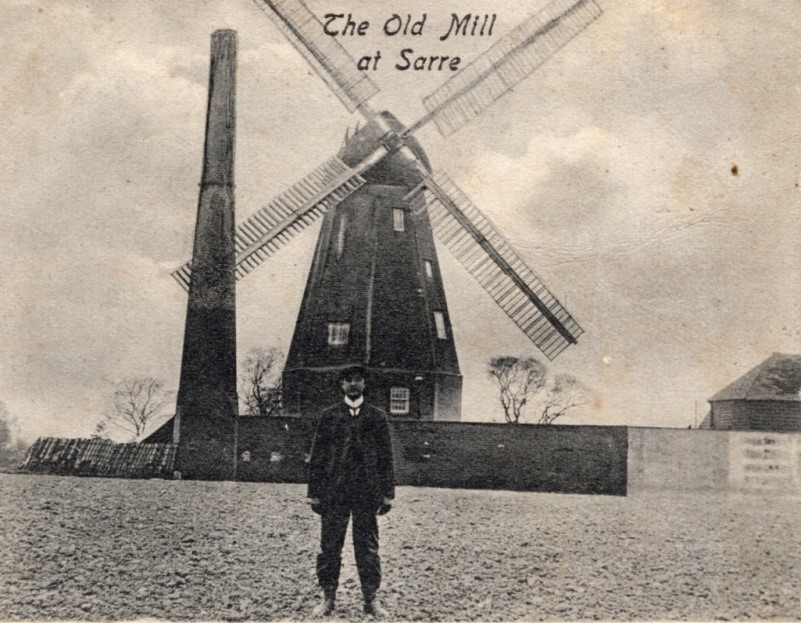
| Intact windmills behind the Western Front were called into service as field hospitals. These were often visible for miles, as with the large mill near Antwerp (below). This eased the transport of the wounded to ensure quicker access to medical care. Once the wounded had been stabilised they needed transport back to “Blighty”. | |
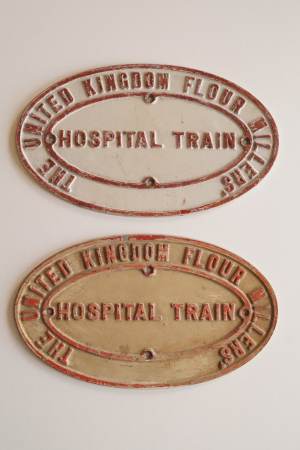
By the end of the war, more than two million soldiers had been repatriated on specially built ambulance trains, a British invention permitting surgery on the move. The UK Flour Millers proudly supported this initiative by sponsoring carriages on these trains, often staffed by Quakers. The latter, although conscientious objectors, still risked their lives under enemy bombardment. You can read more about the ambulance trains here:
From flour to France and back again – The Mills Archive
and here:
A direct hit – The Mills Archive.
Plaques from the UK Flour Millers’ ambulance train, kindly donated to the Mills Archive Trust by Stephen Cannons
12345
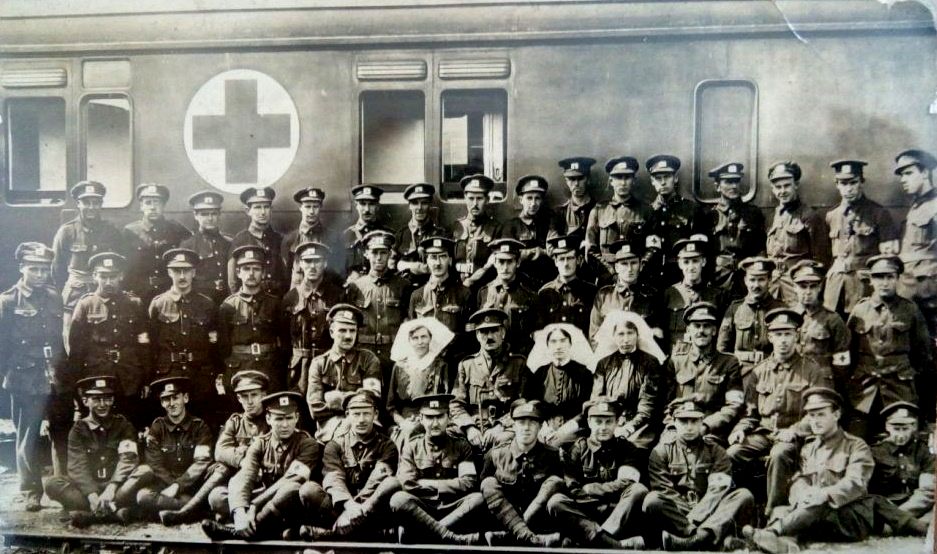
who tended the wounded on the ambulance train
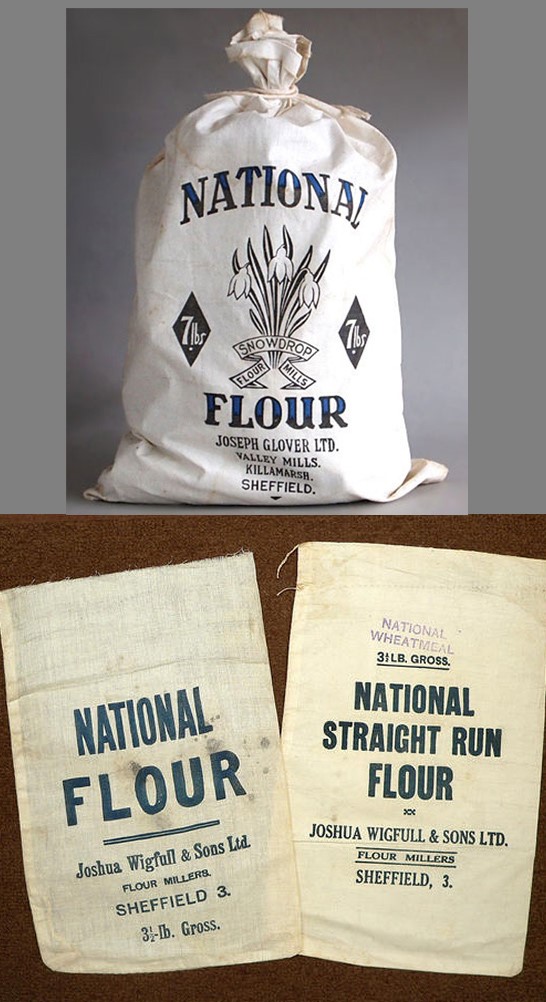
In 1939 the British Government worked with the Windmill Section of the Society for the Protection of Ancient Buildings to determine which windmills were still capable of producing flour. Many had been neglected or abandoned as uneconomic when cheap fuel could power larger mills, but now the situation was reversed with fuel supplies under severe threat.
The introduction in 1942 of “National Flour”, which was coarser (85% extraction) than the pre-war average (72%) and contained nutritional supplements, ensured the population’s health was maintained, possibly improved, even during severe shortages. This was so successful that when the scheme was withdrawn in 1956, it was against the advice of medical experts.
| This newspaper clipping from The Northwestern Miller, 28 January 1942, describes the brief career of the “Alloway”, a Spitfire fighter plane presented to the RAF by the Searle Grain Company, Minnesota, in 1941. The text is transcribed below. | |
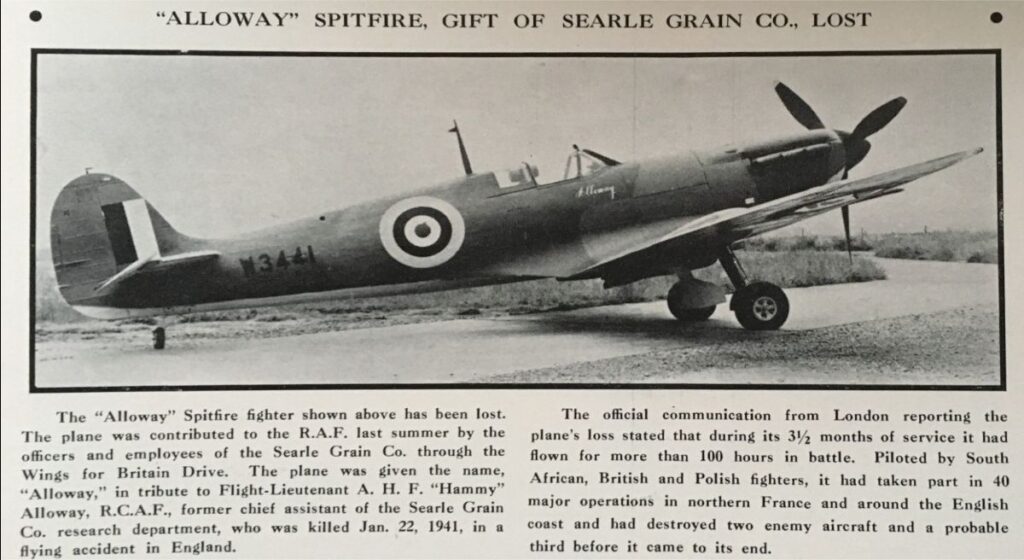
| The “Alloway” Spitfire fighter shown above has been lost. The plane was contributed to the RAF last summer by the officers and employees of the Searle Grain Co. through the Wings for Britain Drive. The plane was given the name, “Alloway”, in tribute to Flight-Lieutenant A.H.F. “Hammy” Alloway, R.C.A.F., former chief assistant of the Searle Grain Co. research department, who was killed on 22 January 1941, in a flying accident in England. The official communication from London reporting the plane’s loss stated that during its 3 ½ months of service it had flown for more than 100 hours in battle. Piloted by South African, British and Polish fighters, it had taken part in 40 major operations in northern France and around the English coast and had destroyed two enemy aircraft and a probably third before it came to its end. | |
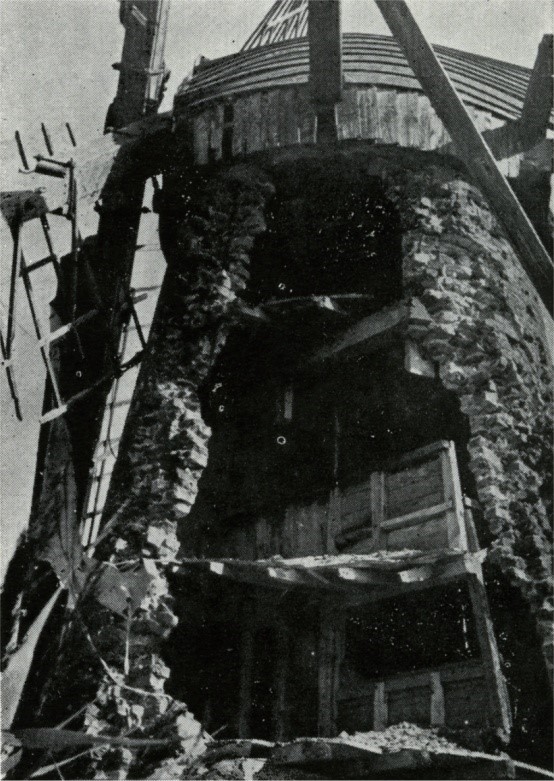
Sadly even British windmills suffered at the hands of the Royal Artillery during the Second World War.
The 18th century pumping windmill at Walberswick in Suffolk was used by troops for target practice. Having “given point and character to that stretch of the marshes between Walberswick and Dunwich”, the mill worked until the start of the War, regulating the flow of water in the marsh dykes. In 1951 an appeal was launched for £800 to repair the mill, supported by Benjamin Britten, the SPAB Windmill Section and others.
Walberswick pumping windmill used for target practice
Other mills suffered severe bomb damage during the Second World War, such as Cranfield’s Mill, near Ipswich in Suffolk.
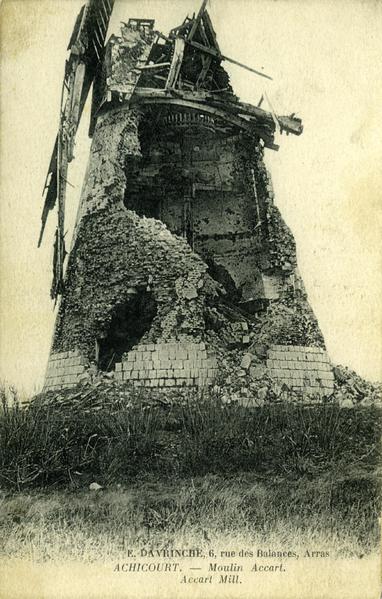
Many hundreds of mills were damaged or destroyed on the French battlefields during the First World War, such as the Moulin Accart, in ruins by 1916.
Achicourt – Moulin Accart" – Images and documents (millsarchive.org)
| This newsletter is based on an excerpt from the Mills Archive research publication, Mills at War, by Ron and Mildred Cookson. If you would like to read the whole publication, please click here: https://new.millsarchive.org/product/mills-at-war/ | |

